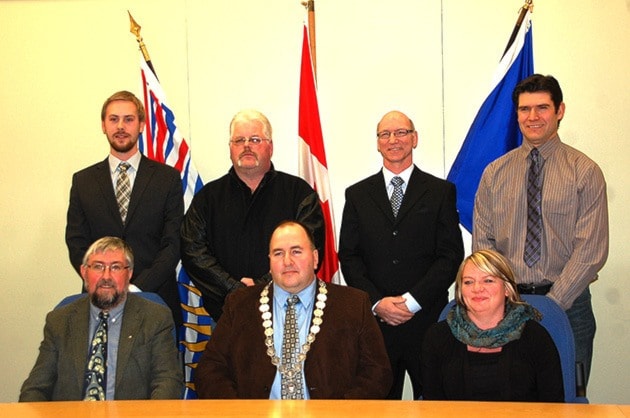The District of Houston is raising taxes 20 percent on heavy industry (Canfor) to help meet infrastructure needs.
Houston mayor and council set property tax rates at a finance meeting last Tuesday, April 14.
Different tax rates are set for the seven different classes, including residential, heavy industry, light industry, business, recreation or non-profit, utilities and farms.
Property taxes in all classes are going up as the District of Houston restructures after the closure of Houston Forest Products (HFP), which cost the District $480,000 in property taxes.
In 2015, residential taxes will go up 2.7 percent, which is $27 for the average $140,000 home, said Houston Director of Finance William Wallace.
Taxes on all other classes except for heavy industry will average a three percent increase.
For heavy industry, which is essentially Canfor, property tax rates will go up 20 percent in 2015.
Wallace says this tax rate includes the three percent increase applied to every class plus a new annual amount of $264,000.
With the 2014 timber licence swap between Canfor and West Fraser, Wallace says Canfor acquired 55 percent of what was previously milled at HFP.
The $264,000 which the District is recovering from heavy industry is 55 percent of the total taxes lost when HFP closed.
Canfor is the only heavy industry in the District except for Pinnacle Pellet and the Huckleberry Mines parking lot.
Canfor also has property in other property classes.
In 2015, Canfor will pay $1.95 million in property taxes, which is 51 percent of the total District tax base, said Wallace.
In 2014, they paid $1.64 million in property taxes, which was 42 percent of the total District tax base.
At that time, HFP still paid taxes for their mill and made up 14 percent, Wallace said.
West Fraser still pays $59,000 in 2015 property taxes to the District for their remaining assets, which is only 1.6 percent of the total District taxes.
Houston Mayor Shane Brienen says the District is in tough spot with the former HFP timber that West Fraser kept and will continue truck to their mills in Smithers, Fraser Lake and Vanderhoof.
"What we are left with as a community now, is that this timber is still out there and being harvested but… we've lost that mill and we've also lost any chance of someone come in and put in a small mill, because there is just not enough fibre to support that."
"A small mill would bring revenue to the District."
Wallace says the timber West Fraser transferred to Canfor will make Canfor's income more certain and will enable them to generate more profits.
He estimates that the Canfor sawmill is worth over $150 million and generates annually over $25 million in after-tax cash flow.
"The future profits from the transferred timber volume will continue to be supported by the District of Houston community and its infrastructure," Wallace said.
The extra $264,000 taxes from heavy industry will go to reserves for infrastructure repair and replacement only, he said.
TAX CATEGORIES
Under the 2015 tax rates, heavy industry pays 38 percent of District taxes, and residential pays 30 percent.
Light industry pays 12 percent and business pays 17 percent.
Thus, the District currently collects roughly two thirds of its taxation revenue from industry and business, and one third from residents.
He notes that this ratio is similar to most communities.
Communities with one major industry employer often collect two thirds of their taxation from that one major heavy industry, Wallace said.
Houston has "fair tax equity between residential and heavy industry classes."
HFP RECOVERY
The District is down $480,000 in property tax revenue due to the HFP closure.
In order to recover from that loss, the District cut their annual operating costs by $353,000.
Most of that was cutting out some job positions, said Mayor Shane Brienen.
The other $127,000 is being recovered through property tax increases, including $10,000 from new residential construction.
The District is also recovering an extra $264,000 from heavy industry to help with costs on infrastructure.
"As the Province pushes us towards Asset Management and looking at what we have, there is massive pressure coming on infrastructure," said Mayor Shane Brienen.
Asked if the District is making a political statement through the Canfor tax hikes, Brienen said only in terms of provincial revenue sharing.
"You have a lot of money flowing out of northern communities through stumpage and other types of royalties, but there are no ways for the municipality to capture that.
"A lot of municipalities are feeling a lot of pressure that comes back to failing infrastructure and the huge costs ahead on that for everyone in the north," Brienen said.
"The focus now is just on trying to maintain what we have and we feel we're really falling behind there."
